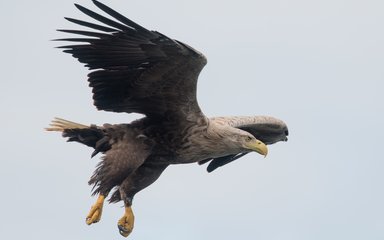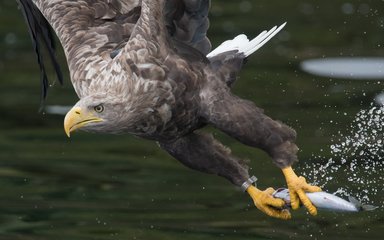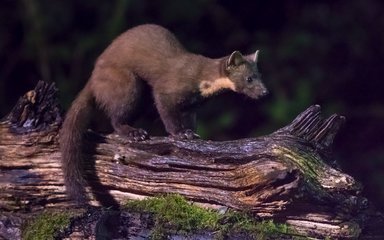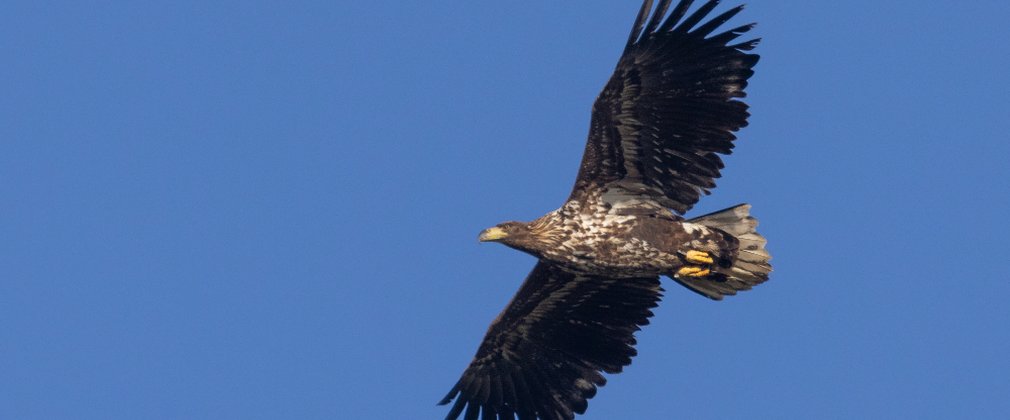
The white-tailed eagle, also known as the sea eagle, is the UK's largest bird of prey. Once widespread across the country, human persecution wiped them out. Reintroduced to Scotland from the 1970s, we’re taking part in a landmark conservation project to return these incredible birds to England.
In 2019, working with the Roy Dennis Wildlife Foundation, we released the first six white-tailed eagles on the Isle of Wight, returning them after an absence of over 240 years. The project aims to restore these lost birds to the landscape by releasing up to 60 birds.
White-tailed eagle statistics
- length: between 70 and 90cm
- weight: males 3.5-5kg and females 4-7kg
- wingspan: an impressive 2-2.4m
- lifespan: 20-25 years
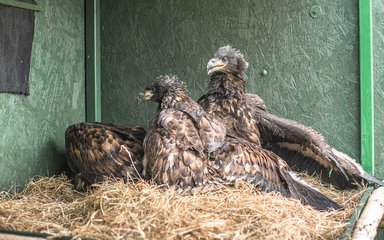
White-tailed eagle habitat and breeding
White-tailed eagles are found along rocky coastlines, estuaries and lochs near the sea - hence their alternative name of 'sea eagle'. They eat fish, rabbits, hares and other birds.
White-tailed eagles mate for life and breed in the same territory each year. The female lays two or three eggs in March or April and incubates them until they hatch after 38 days. The female does most of the direct feeding of the young, though the male will occasionally help. The chicks begin to feed themselves between five and six weeks of age, and fledge when they are about 10-11 weeks old.
Did you know? The size of a white-tailed eagle's nest is a big as a double bed!
What do white-tailed eagles look like?
White-tailed eagles have pale necks and heads, which become almost white in mature birds, with brown body plumage. As their name suggests, their tails are white and have a distinctive wedge shape. They have striking hooked yellow beaks, golden eyes and yellow legs and talons.
